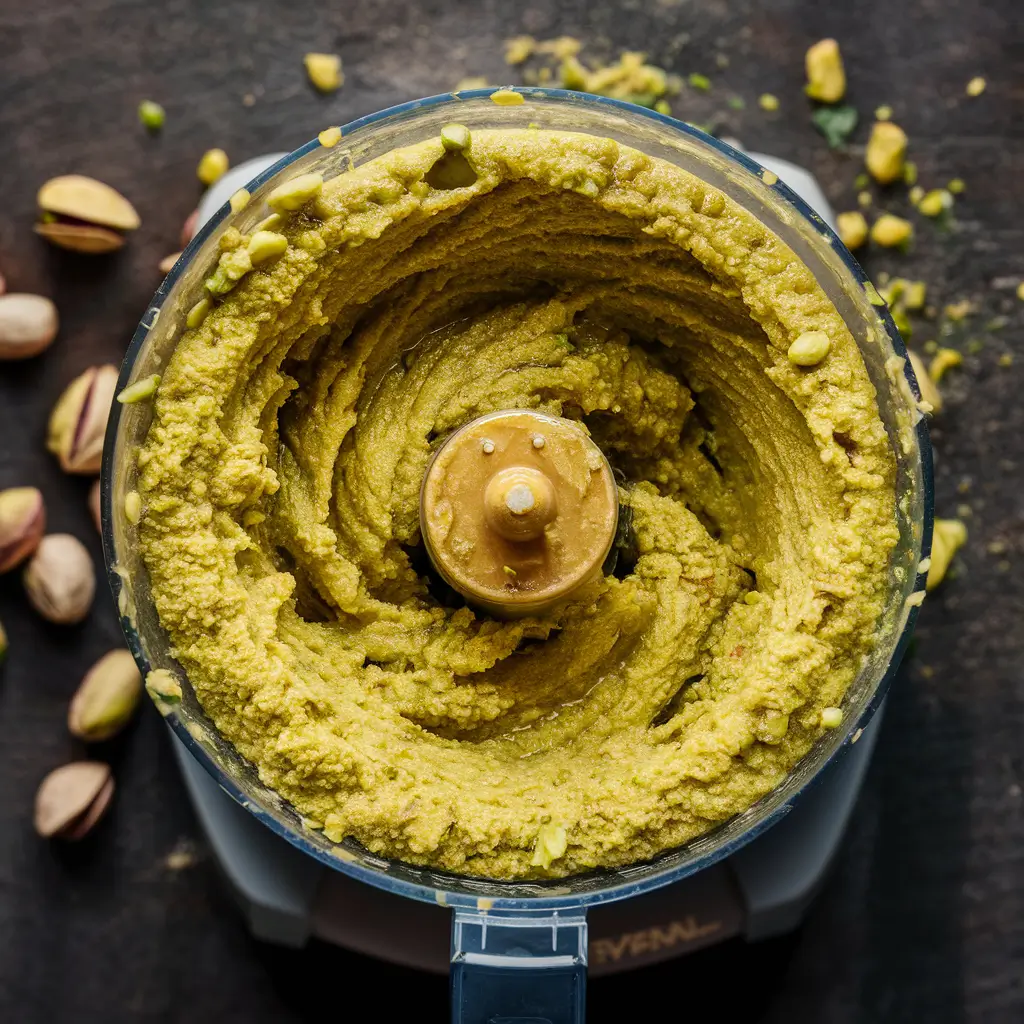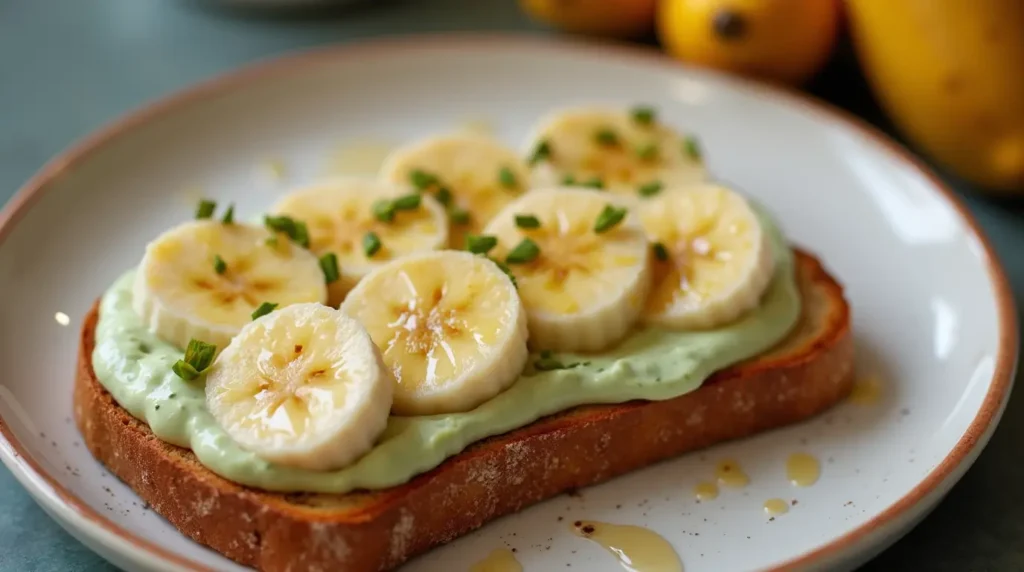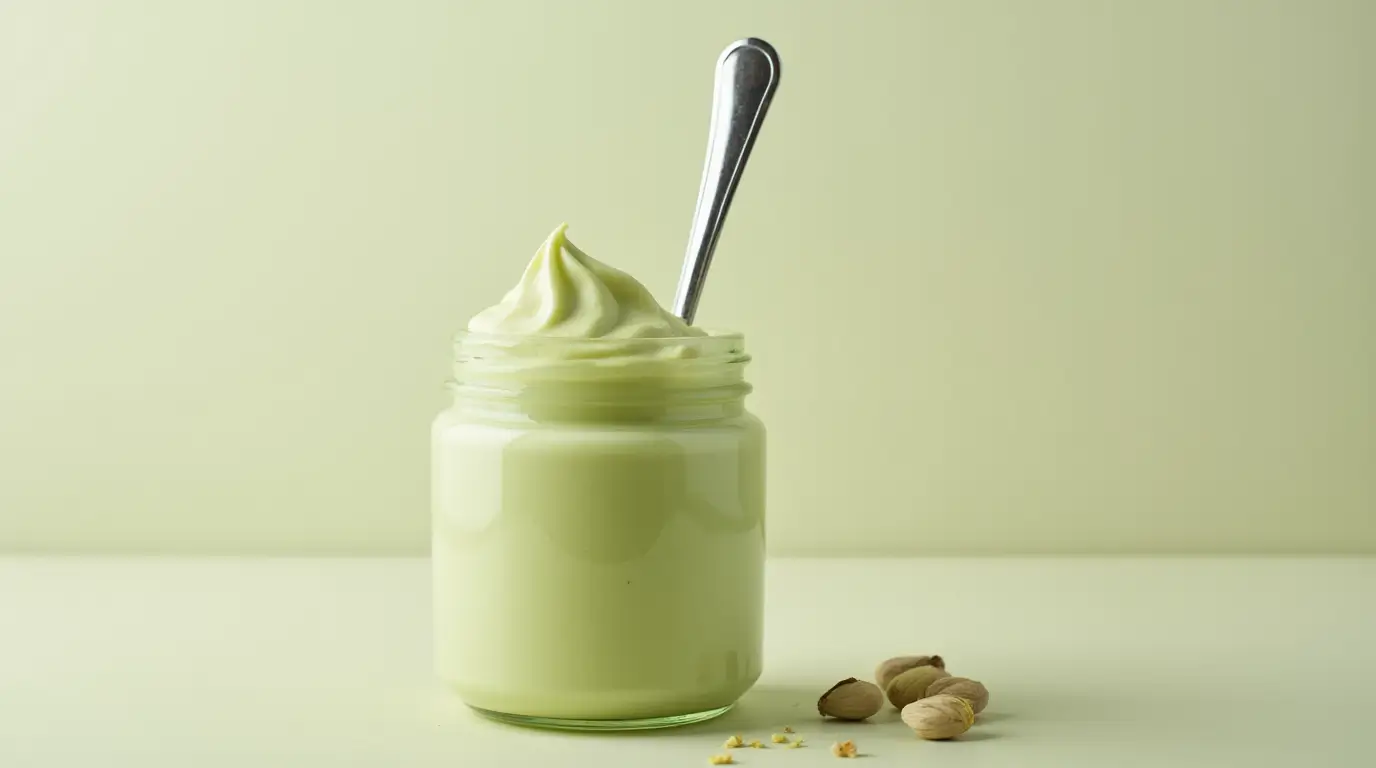Table of Contents
Introduction
Pistachio cream has gained significant popularity in modern culinary circles, praised for its rich flavor and distinctive green hue. This guide provides an in-depth look at how to make pistachio cream. For a simpler recipe, visit our Easy Pistachio Cream Recipe. For more inspiration, check out this Best Italian Pistachio Cream recipe by CucinaByElena.
The objective of this guide is to provide readers with a comprehensive understanding of how to make pistachio cream from scratch. By following the methods outlined in this article, readers can successfully create a luxurious pistachio spread that rivals store-bought options. Throughout this post, we will provide step-by-step instructions designed to simplify the process, ensuring optimal results regardless of cooking experience.
In the upcoming sections, readers can expect to discover essential techniques for preparing the cream, such as proper ingredient selection and blending methods. Troubleshooting tips will help address common challenges, ensuring a smooth experience while making pistachio cream. Additionally, we will explore various recipe variations, allowing readers to customize their creation according to personal taste preferences or dietary requirements.
Whether you’re looking to enhance your morning toast, create an exquisite dessert, or simply enjoy a tasty treat, this guide aims to equip you with the knowledge and skills necessary to master the art of pistachio cream. Prepare to embark on a culinary adventure as we delve into this delightful topic, ensuring you’ll be able to whip up this rich concoction with ease and confidence.
Ingredients and Equipment
Creating pistachio cream requires a thoughtful selection of ingredients and proper equipment to ensure a smooth and flavorful final product. The critical ingredient, of course, is pistachios. For the best results, it is advisable to use blanched pistachios, which have had their skins removed. This choice yields a creamier texture and vibrant color. However, unblanched pistachios can also be utilized if a more robust flavor and a slightly grainier texture are preferred.
In addition to pistachios, other ingredients can enhance the pistachio cream’s flavor profile. Common additions include a pinch of salt to enhance the nutty taste, and sweetness can be achieved by incorporating powdered sugar or honey. For those who enjoy a hint of warmth, spices such as vanilla or cinnamon can be included. While vanilla extract is a popular option, fresh vanilla bean or ground vanilla powder can provide a more intense flavor variance.
Regarding equipment, a high-quality food processor or blender is essential for achieving the ideal pistachio cream consistency. These tools help break down the pistachios efficiently, allowing their natural oils to be released, which creates that desired creamy texture. If an additional layer of flavor is desired, a roasting pan may be used to toast the pistachios before processing. This step can bring out deeper, more complex flavors in the finished pistachio cream.
Measuring your ingredients accurately is also important for balance. Typically, a standard pistachio cream recipe starts with around two cups of pistachios, one-half cup of powdered sugar, and a pinch of salt. If you opt for substitutions, ensure they complement the pistachios instead of overpowering them. With the right ingredients and tools at your disposal, making pistachio cream can be both a straightforward and enjoyable culinary adventure.
Step-by-Step Instructions
Making pistachio cream at home is a rewarding experience that can be achieved through a straightforward process. Follow these detailed steps to create a smooth, rich pistachio cream that can be used in various recipes or enjoyed as a spread. For a simpler recipe, visit our Easy Pistachio Cream Recipe.
Once you have reached your desired consistency, pour the pistachio cream into an airtight container. It can be stored in the refrigerator for up to two weeks. For visual learners, utilizing images or videos for each step can significantly enhance the comprehension of the process of how to make pistachio cream. Moreover, experimenting with flavor variations, such as adding vanilla or almond extracts, can also enrich the final pistachio cream product.
Begin by preparing the pistachios. Start with approximately one cup of unsalted pistachios, ensuring they are shelled. To enhance the flavor and color of your pistachio cream, consider blanching the nuts. This can be achieved by boiling water, adding the shelled pistachios for about 2-3 minutes, and then quickly transferring them to an ice bath. After cooling, the skins will loosen, allowing for easy removal.
Once the pistachios are blanched and skinned, it is time to dry them thoroughly. Spread the nuts on a clean kitchen towel and allow them to air dry for about 30 minutes. This step is crucial, as any moisture left on the pistachios can affect the pistachio cream’s final texture.
Next, place the dried pistachios in a food processor. Begin processing them on a low setting, gradually increasing the speed as they break down. Initially, the nuts will form a coarse meal; continue processing until they reach a fine paste. This process may take several minutes, so patience is key. To achieve the desired creaminess, you can scrape down the sides of the bowl periodically.

If you prefer a sweetened version of the pistachio cream, you may add sugar or honey at this stage, adjusting the quantity to taste. For added creaminess, consider incorporating a modest amount of neutral oil or coconut oil during the blending process. This will assist in achieving a silky texture for your pistachio cream.
Once you have reached your desired consistency, pour the pistachio cream into an airtight container. It can be stored in the refrigerator for up to two weeks. For visual learners, utilizing images or videos for each step can significantly enhance the comprehension of the process of how to make pistachio cream. Moreover, experimenting with flavor variations, such as adding vanilla or almond extracts, can also enrich the final pistachio cream product.
Troubleshooting Common Issues
When preparing pistachio cream, several common issues may arise, affecting the desired outcome. Understanding these problems and their solutions will help streamline the process and ensure a successful result.
One frequent issue faced when learning how to make pistachio cream is a gritty texture in the finished pistachio cream. This often occurs when the nuts are not blended sufficiently or are ground too coarsely. To mitigate this, it is vital to use high-quality, fresh pistachios and to blend them slowly at first. Start by processing the nuts until they are finely ground before gradually increasing the blending speed. Should the texture remain gritty, adding a small amount of oil, such as a neutral or nut oil, can assist in achieving a smoother consistency.
Another challenge is over-blending, which can lead to a separation of oils and dry components in the mixture. This typically happens when the cream is blended for an excessive period. To avoid this scenario, it is best to blend in short intervals, stopping to scrape down the sides of the container regularly. This method not only prevents overheating but also ensures that all pistachios are evenly processed.
If the pistachio cream turns out too thick or too runny, adjusting the liquid ratio during preparation is crucial. Thicker cream can often be thinned with the addition of a small amount of water or milk, while a runny consistency can be thickened by blending in a little more ground pistachios. Remember to adjust gradually, testing for the desired consistency.
By identifying these common problems and implementing effective solutions, readers can enhance their experience while making pistachio cream, leading to a smoother preparation process and a more enjoyable final product.
Achieving the Perfect Consistency
One of the most crucial aspects of how to make pistachio cream is achieving the perfect consistency, which can significantly influence both its flavor release and overall enjoyment. The texture of pistachio cream is largely dependent on the blending time, the type of blender used, and the addition of any liquids. When preparing pistachio cream, it is essential to start with high-quality, raw pistachios, which should be shelled and ideally pre-soaked to enhance their creaminess. This soaking process can soften the nuts and facilitate a smoother blend.
The blending process is vital; using a high-powered blender will yield a creamier texture more efficiently than a standard blender. Initially, blend the pistachios on a low setting to break them down, then gradually increase the speed. It is recommended to blend for at least 3-5 minutes, stopping occasionally to scrape down the sides to ensure all parts are smoothly blended. As you progress, monitor the cream’s consistency closely. If you prefer a thinner pistachio cream, adding a small amount of oil, such as avocado or neutral oil, can improve spreadability without overpowering the nutty flavor.
Furthermore, adjusting liquids can be a key factor in modifying the texture to meet personal preferences. Adding water or milk, whether dairy or plant-based, can assist in achieving a desired consistency; however, this should be done incrementally. A little goes a long way, so start by incorporating just one tablespoon at a time, blending thoroughly before making any further adjustments. Ultimately, the goal is to find a balance that results in silky, smooth pistachio cream, suitable for a variety of culinary applications, from spreads to desserts. Take the time to experiment, while always keeping personal taste at the forefront.
Variations of the Recipe
Pistachio cream is a versatile and delicious treat that can be customized to suit a variety of tastes and dietary requirements. By experimenting with different ingredients, you can create variations that enhance the flavor profile and meet specific preferences. For example, one might consider adding spices such as cinnamon or nutmeg for a warm, aromatic touch. A pinch of cardamom can also introduce a unique twist that pairs beautifully with the nuttiness of pistachios.
Another way to enhance the flavor when learning how to make pistachio cream is by incorporating sweeteners. While traditional recipes may call for sugars, alternatives like honey or maple syrup can offer distinct benefits—a touch of natural sweetness and additional depth of flavor. For those who prefer a sugar-free option, sugar substitutes such as stevia or erythritol can be effectively utilized, ensuring that the pistachio cream remains enjoyable without compromising dietary goals.
For individuals with dietary restrictions, alternative versions of how to make pistachio cream can be easily created. Gluten-free enthusiasts will find the basic recipe naturally suits their needs. Furthermore, lactose-intolerant individuals can substitute traditional dairy products with plant-based alternatives, such as almond milk or coconut cream, allowing them to enjoy a rich, creamy texture without discomfort. Vegans can also adapt the recipe by selecting dairy-free options and omitting any honey or animal-derived sweeteners.
Readers are encouraged to experiment with their own variations, as the basic guide on how to make pistachio cream serves as a solid foundation for creativity. Infusing additional flavors—whether through fresh herbs like mint or zesty citrus notes—can yield exciting results. The endless possibilities for customization make this recipe not only a simple delight but also a canvas for culinary innovation. Embrace your creativity and discover your own unique pistachio cream creations!
Storage Tips
To effectively store pistachio cream and maintain its freshness, it is essential to consider optimal conditions, appropriate containers, and shelf life. Proper storage can significantly extend the usability of this delightful treat, allowing you to enjoy its rich taste and nutritional benefits over time. When learning how to make pistachio cream, knowing how to store it correctly is crucial.
The first step in preserving your pistachio cream is to ensure it is placed in airtight containers. Glass jars or high-quality plastic containers with tight-sealing lids are excellent choices, as they minimize air exposure, which can lead to oxidation and spoilage. Be sure to transfer the cream to its storage container soon after preparation to maintain its quality. If you anticipate using the pistachio cream within a few days, refrigeration is recommended; store it in the refrigerator at a temperature of 32°F to 40°F (0°C to 4°C).
When refrigerated, homemade pistachio cream typically lasts for about one to two weeks. However, if you find yourself with more than you can consume in this timeframe, consider freezing it. Transfer the pistachio cream into freezer-safe containers or ice cube trays for portioned storage. When stored in the freezer at 0°F (-18°C), pistachio cream can remain viable for up to three months. To use frozen cream, simply remove the desired portion and allow it to thaw in the refrigerator for several hours or overnight.
In summary, maintaining optimal conditions when storing pistachio cream is vital for preserving its flavor and freshness. Utilizing airtight containers and monitoring both refrigeration and freezing methods can extend the cream’s shelf life, allowing you to savor the delightful essence of pistachios whenever you wish. Remember, proper storage is key when you know how to make pistachio cream.
Uses and Serving Suggestions

Pistachio cream is a versatile ingredient that can elevate numerous dishes, adding both flavor and a stunning green hue. One popular way to use pistachio cream is as a spread, akin to traditional nut butters. It pairs wonderfully with toast, croissants, or pancakes, creating an indulgent breakfast option. The rich, nutty flavor can be complemented by slices of banana or a drizzle of honey, enhancing the overall taste experience.
For dessert enthusiasts, pistachio cream can serve as a delightful filling. Whether nestled within pastries, incorporated into cakes, or used as a rich layer in trifles, the possibilities are endless. A favorite among many is the pistachio cream layer in a tart, where it is harmonized with fresh fruits such as strawberries or raspberries, adding a sweet-tart contrast that tantalizes the palate.
Moreover, pistachio cream can shine in savory applications. Consider integrating it into pasta dishes, where it can function as a sauce or dressing, mixed with olive oil and grated cheese. Combining it with roasted vegetables can transform a simple dish into a gourmet delight, while its nutty aroma enriches the overall presentation.
Pairing pistachio cream with beverages opens up further creativity. It can be blended into smoothies, giving a unique twist to your morning routine, or frosted atop milkshakes for a luxurious touch. A cup of coffee or espresso can also be elevated by a small dollop of pistachio cream, imparting a unique flavor profile that complements the rich coffee notes.
In addition to these suggestions, you might find that this versatile cream pairs harmoniously with cheese, particularly soft cheeses like ricotta or goat cheese, creating a sophisticated cheese platter. The key to how to make pistachio cream successfully is to experiment and discover combinations that suit your taste. Culinary exploration with pistachio cream is sure to yield delightful surprises for those who know how to make pistachio cream.
Conclusion
In this comprehensive guide on how to make pistachio cream, we have explored the essential steps and techniques involved in creating this delightful spread. For a quicker, simpler version of the recipe, check out our Easy Pistachio Cream Recipe. For another excellent recipe, consider visiting Homemade Pistachio Cream Recipe by An Italian in my Kitchen.
Moreover, we took a closer look at the equipment needed for preparing pistachio cream, such as food processors or high-performance blenders, which play an integral part in blending the ingredients smoothly. Maintaining the right balance of texture and flavor is significant for an enjoyable experience. By following the steps covered in this guide on how to make pistachio cream, there is no reason why anyone cannot achieve a wonderfully homemade pistachio cream that can serve various culinary purposes, including spreads, desserts, and more.
We invite you to try making this delectable pistachio cream at home, experimenting with different ingredients or ratios to suit your taste. Your culinary adventure does not end here; we encourage you to share your personal experiences and feedback in the comments section below. Engaging with our community not only fosters connections but also inspires others to explore their kitchen creativity. Enjoy your journey into the art of how to make pistachio cream, and we look forward to hearing how your creation turns out!


2 thoughts on “How to Make Pistachio Cream: A Comprehensive Guide”
Comments are closed.